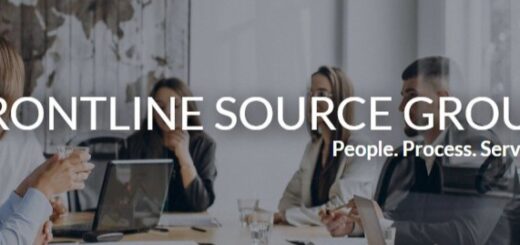New Board Expectations: CEO Strategies for Hiring
Managing the Hiring Process: A Handbook for Executives In the constantly changing field of organizational management, the hiring process is a crucial element that has the potential to greatly impact a company’s future. Setting reasonable hiring goals, being aware of the board’s expectations, and communicating clearly at every stage are all crucial to my journey. This post will examine these aspects and more, offering a thorough manual for effectively negotiating the hiring process. We are currently hiring for various positions in our company.
Key Takeaways
- Understanding the Board’s Expectations:
- Clearly understand the board’s vision and expectations for the new hire.
- Align hiring goals with the organization’s long-term objectives.
- Setting Realistic Hiring Goals:
- Set achievable and measurable hiring goals based on the organization’s needs.
- Consider the current market conditions and talent availability when setting hiring goals.
- Communicating Effectively with the Board:
- Maintain open and transparent communication with the board throughout the hiring process.
- Provide regular updates on the progress and challenges in the hiring process.
- Creating a Comprehensive Hiring Plan:
- Develop a detailed hiring plan that outlines the recruitment strategy, timeline, and resources needed.
- Consider diversity and inclusion initiatives in the hiring plan to attract a wide range of candidates.
- Managing Board Feedback and Input:
- Actively seek and incorporate board feedback into the hiring process.
- Clearly communicate the rationale behind decisions made in response to board input.
- Navigating the Negotiation Process:
- Approach negotiations with a clear understanding of the organization’s budget and the candidate’s expectations.
- Strive for a win-win outcome that satisfies both the candidate and the organization.
- Implementing Onboarding and Integration Strategies:
- Develop a structured onboarding plan to help new hires integrate into the organization smoothly.
- Provide ongoing support and resources to facilitate the new hire’s success in their role.
- Evaluating and Reporting on Hiring Outcomes:
- Regularly evaluate the success of the hiring process against the established goals.
- Provide comprehensive reports to the board on the outcomes of the hiring process and the new hire’s performance.
First & foremost, it’s critical to comprehend the board’s expectations. I now know that every board has a distinct vision and priorities that influence their hiring standards. I can better understand board members’ viewpoints on the qualifications and experiences they believe are necessary for new hires by having open discussions with them. This knowledge promotes trust & cooperation in addition to assisting me in matching the board’s vision with my hiring practices. I also understand that the board frequently has higher standards than just qualifications.
They might want to maintain particular ethical or cultural norms within the company. I can make sure that my hiring choices are in line with the organization’s values and mission by proactively seeking clarification on these expectations. Achieving long-term success and preserving a unified workplace culture depend on this alignment.
Setting reasonable hiring objectives is the next step after I have a firm understanding of the board’s expectations. I am aware that while lofty objectives can serve as inspiration, they must also be attainable. Setting SMART goals—specific, measurable, achievable, relevant, & time-bound—is a successful strategy, in my experience. For example, I prioritize identifying critical competencies & creating a timeline that permits a comprehensive candidate evaluation, as opposed to trying to fill a position in an impractical amount of time. When establishing these objectives, I also take the state of the market into account.
Numerous factors, including industry demands and economic trends, can cause changes in the talent landscape. I can create hiring objectives that are both ambitious and realistic by carrying out market research & examining data on the availability of talent. This methodical approach keeps me from getting frustrated and guarantees that I stay committed to identifying the best applicants for the company. Another crucial component of the hiring process is making sure the board is informed.
Transparency is essential, I’ve discovered; informing board members of developments, difficulties, and strategy adjustments promotes teamwork. I can share insights about candidate pipelines and any changes made to hiring objectives based on market conditions by holding regular updates through meetings or reports. Also, I believe it is advantageous to ask board members for input at every stage of the procedure.
Their perceptions may offer insightful viewpoints that I would not have otherwise thought of. I can guarantee that board members feel appreciated and involved in the decision-making process by establishing an open line of communication. This cooperative approach improves the overall caliber of our hiring decisions while also fortifying our working relationship. After establishing effective communication & a clear understanding of expectations, I focus on developing a thorough hiring plan.
This plan outlines important steps, deadlines, and responsibilities, acting as a road map for the entire hiring process. I start by outlining the duties & responsibilities of each individual participating in the hiring process, from department heads to HR staff. Apart from delineating job descriptions, I also integrate approaches for locating applicants. Using a variety of sourcing techniques, such as job advertisements, networking gatherings, or recruitment firms, improves my chances of locating exceptional candidates. I also make sure that a structured interview process that prioritizes both technical proficiency and cultural fit is part of my plan.
By following these procedures, I establish a strong framework that directs my hiring process & complies with the board’s requirements. It becomes essential to manage board input and feedback as I work through the hiring process. I am aware that, because of their backgrounds and experience, board members frequently have insightful opinions. As a result, from creating job descriptions to assessing applicants, I aggressively solicit their opinions at every step of the hiring process.
Nonetheless, handling feedback calls for a careful balance. Although I value different points of view, I also have to make sure that decisions are made effectively and concisely. I rank feedback according to its applicability to the hiring objectives and corporate culture in order to strike this balance.
I can make well-informed decisions that benefit the organization and its leadership by combining board member input and coordinating it with our strategic goals. Negotiation is a crucial step in obtaining top talent once I have found qualified applicants. I am aware that negotiations can be difficult because candidates frequently have different demands about pay, benefits, and work-life balance.
I approach this stage with empathy and openness in order to promote fruitful negotiations. I start by performing in-depth market research to comprehend the competitive pay packages offered by our sector. Equipped with this knowledge, I am able to make offers that appeal to candidates while also fitting within our financial limitations. I’m also still up for conversations regarding non-cash perks like chances for professional growth or flexible work schedules. I improve the possibility of coming to advantageous agreements by encouraging a collaborative environment during negotiations.
My attention turns to putting in place efficient onboarding and integration strategies after I’ve been successful in negotiating offers & bringing new hires on board. For new hires to feel accepted and prepared to thrive in their positions, a well-organized onboarding procedure is crucial. My experience has shown me that a thorough onboarding program ought to incorporate mentorship opportunities, orientation sessions, and unambiguous communication regarding the organization’s morals. Moreover, assimilation into the corporate culture is equally crucial.
Through team-building exercises or casual get-togethers, I make it a point to introduce new hires to current team members. This promotes relationships & speeds up the process of new hires adjusting to their workplace. Long-term employee engagement and retention are facilitated by my time and resource investments in onboarding and integration strategies. Lastly, one of the most important steps in improving my hiring procedures for future success is assessing and reporting on hiring outcomes. I spend time evaluating a number of metrics following each hiring cycle, including employee retention rates, candidate quality, & time-to-fill positions. By using a data-driven approach, I am able to pinpoint areas that require improvement and make wise decisions going forward.
In order to preserve accountability & transparency, I also think that the board should be informed of these results. I can show how our efforts are in line with corporate objectives by providing data on our hiring successes & difficulties. This strengthens the board’s and my mutual trust while also offering insightful information for future hiring practices. To sum up, a multifaceted strategy is needed to successfully navigate the hiring process, including knowing board expectations, establishing reasonable goals, communicating effectively, planning thoroughly, handling feedback, negotiating, onboarding tactics, and outcome evaluation.
I can build a cooperative relationship with the board of directors and improve my organization’s capacity to draw in & keep top talent by adhering to these principles. In order to make sure that our hiring procedures support our long-term success and are in line with our strategic goals, I’m determined to keep improving as I go along.
In a related article on Frontline Source Group’s CEO Blog, the company announced the expansion to Colorado and the opening of a new Denver office. This strategic move demonstrates the CEO’s commitment to growth and success in new markets, which aligns with the theme of managing board expectations and making high-stakes hiring decisions. To read more about Frontline Source Group’s expansion, visit here.
FAQs
What are some common challenges CEOs face when it comes to high-stakes hiring?
Some common challenges CEOs face when it comes to high-stakes hiring include finding the right talent for critical roles, managing board expectations, and ensuring a smooth transition for the new hire.
How can CEOs manage board expectations when it comes to high-stakes hiring?
CEOs can manage board expectations by clearly communicating the hiring process, setting realistic timelines, and providing regular updates on the progress of the search. It is also important to align the board’s expectations with the company’s strategic goals and priorities.
What are some strategies that CEOs can use to ensure successful high-stakes hiring?
Some strategies that CEOs can use to ensure successful high-stakes hiring include conducting thorough interviews, involving key stakeholders in the hiring process, and providing support and resources for the new hire to succeed in their role.
How important is it for CEOs to involve the board in the high-stakes hiring process?
Involving the board in the high-stakes hiring process is important as it helps to align expectations, gain buy-in for the new hire, and ensure that the hiring decision is in line with the company’s overall strategy and goals.
What are the potential risks of not managing board expectations effectively during high-stakes hiring?
The potential risks of not managing board expectations effectively during high-stakes hiring include misalignment of priorities, lack of support for the new hire, and potential conflicts or misunderstandings between the CEO and the board.





